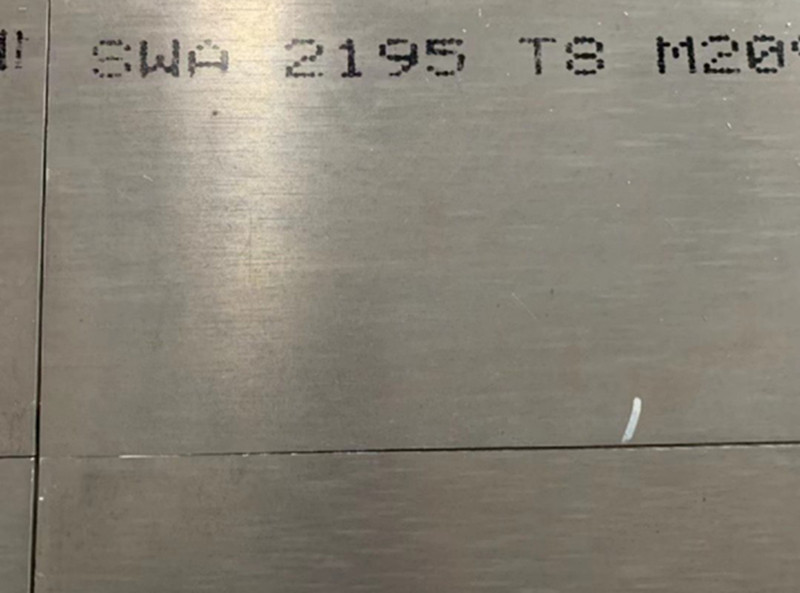How Titanium Alloys and Aluminum-Lithium Alloys Are Used in Aircraft Design and Maintenance

In the vast expanse of the aerospace industry, metallic materials have always been the brightest stars. From the wooden planes of the Wright brothers to modern jetliners, innovations in metallic materials have driven the continuous leaps in aviation technology. In the field of aircraft manufacturing and maintenance, metallic materials, with their exceptional performance and reliability, form the solid barrier for aviation safety. Every takeoff, every flight, is a testament to the perfect fusion of metal materials and aviation technology.
I. Metal Material Selection in Aircraft Manufacturing
Aluminum alloys have become a classic choice for aircraft structure applications. Alloys from the 2024 and 7075 series, known for their superior strength-to-weight ratio and fatigue resistance, are the materials of choice for fuselage skins, spars, and frames. Even in the Boeing 787 Dreamliner, aluminum alloys still account for 20% of the structure, playing a crucial role in the wings and tail.
Titanium alloys are particularly valuable in high-temperature components like engines. The Ti-6Al-4V alloy is used extensively in compressor blades and housings, demonstrating excellent high-temperature strength and creep resistance. The F-35 fighter jet, for example, uses titanium alloys for 27% of its structure, ensuring reliable performance even in extreme conditions.
Ultra-high-strength steels hold an irreplaceable position in landing gear systems. The 300M steel, with its excellent strength and toughness, withstands the enormous impact loads during takeoffs and landings. The A380’s landing gear, made from ultra-high-strength steel, can support a maximum takeoff weight of 575 tons.
II. The Rise of Aluminum-Lithium Alloys in Aircraft Manufacturing
With the increasing demand for lightweight and high-strength materials, aluminum-lithium alloys have gained widespread attention in the aerospace sector. Alloys such as 2099-T83 and 2195 offer significant advantages in terms of lower density and higher stiffness, making them indispensable materials in modern aircraft.
For example, the A350 features aluminum-lithium alloys in its fuselage structure, resulting in an approximate 10% reduction in weight. The 2099 aluminum-lithium alloy is 3% lighter than traditional aluminum alloys, while its stiffness has increased by 6%. These improvements make aircraft lighter and provide greater payload capacity. Compared to conventional aluminum alloys, aluminum-lithium alloys also exhibit better fatigue resistance and superior corrosion resistance, thus enhancing the aircraft’s lifespan and reliability.
Moreover, another major benefit of aluminum-lithium alloys is their relatively low coefficient of thermal expansion, which maintains structural stability even at high temperatures. As manufacturing technologies continue to improve, the processing difficulty and cost of aluminum-lithium alloys are decreasing, making them more accessible for widespread application in the future.

III. Challenges of Metal Materials in Aircraft Maintenance
Detecting and repairing metal fatigue cracks is a key focus in aircraft maintenance. Advanced techniques like eddy current testing and ultrasonic testing, combined with 7075-T7351 aluminum alloy patches for reinforcement, effectively extend the lifespan of aircraft structures. Boeing has also developed laser shock peening technology, which significantly enhances the fatigue resistance of aluminum alloy structures.
Corrosion protection and material replacement strategies are crucial for flight safety. Using Alclad-coated aluminum materials and chromate conversion coatings, along with regular maintenance checks, can effectively control corrosion development. For heavily corroded areas, 7050-T7451 aluminum alloy is used for replacement repairs, ensuring the structural integrity of the aircraft.
Material performance degradation assessment is a critical part of airworthiness maintenance. Techniques like hardness testing and metallographic analysis are employed to evaluate microstructural changes in materials, aiding in the development of scientifically grounded repair plans. Airbus has developed a material life prediction system that accurately assesses the remaining lifespan of metal structures.
IV. Innovation and Development of Metal Materials
The development and application of new aluminum alloys continue to advance. The use of aluminum-lithium alloys in the A350 fuselage has significantly reduced weight. The 2099-T83 aluminum-lithium alloy’s density is 3% lower than that of conventional aluminum alloys, while its stiffness has increased by 6%, offering a new option for future aircraft design.
The innovation in titanium alloy manufacturing technology has lowered costs. Techniques such as electron beam melting and 3D printing have increased the material utilization rate of titanium alloy components from 10% to over 80%. General Electric (GE) Aviation has utilized additive manufacturing technology to produce titanium alloy fuel nozzles, consolidating 20 parts into one, reducing the weight by 25%.
The application prospects of metal matrix composites are also broadening. Silicon carbide particle-reinforced aluminum matrix composites have been applied in the vertical stabilizers of the F-16 fighter jet, improving stiffness by 50%. In the future, nanoparticle-reinforced metal matrix composites are expected to find wider applications in the aerospace sector.
Metal materials used in aircraft manufacturing and maintenance have witnessed the progress of human aviation technology. From aluminum alloys to titanium alloys, and from traditional manufacturing to additive manufacturing, every material innovation contributes to enhancing aviation safety. At the intersection of material science and aviation technology, we see the power of innovation and the resolute strides of humankind toward conquering the skies. In the future, with the continuous development of new material technologies, metal materials will continue to write the glorious chapters of the aerospace industry.